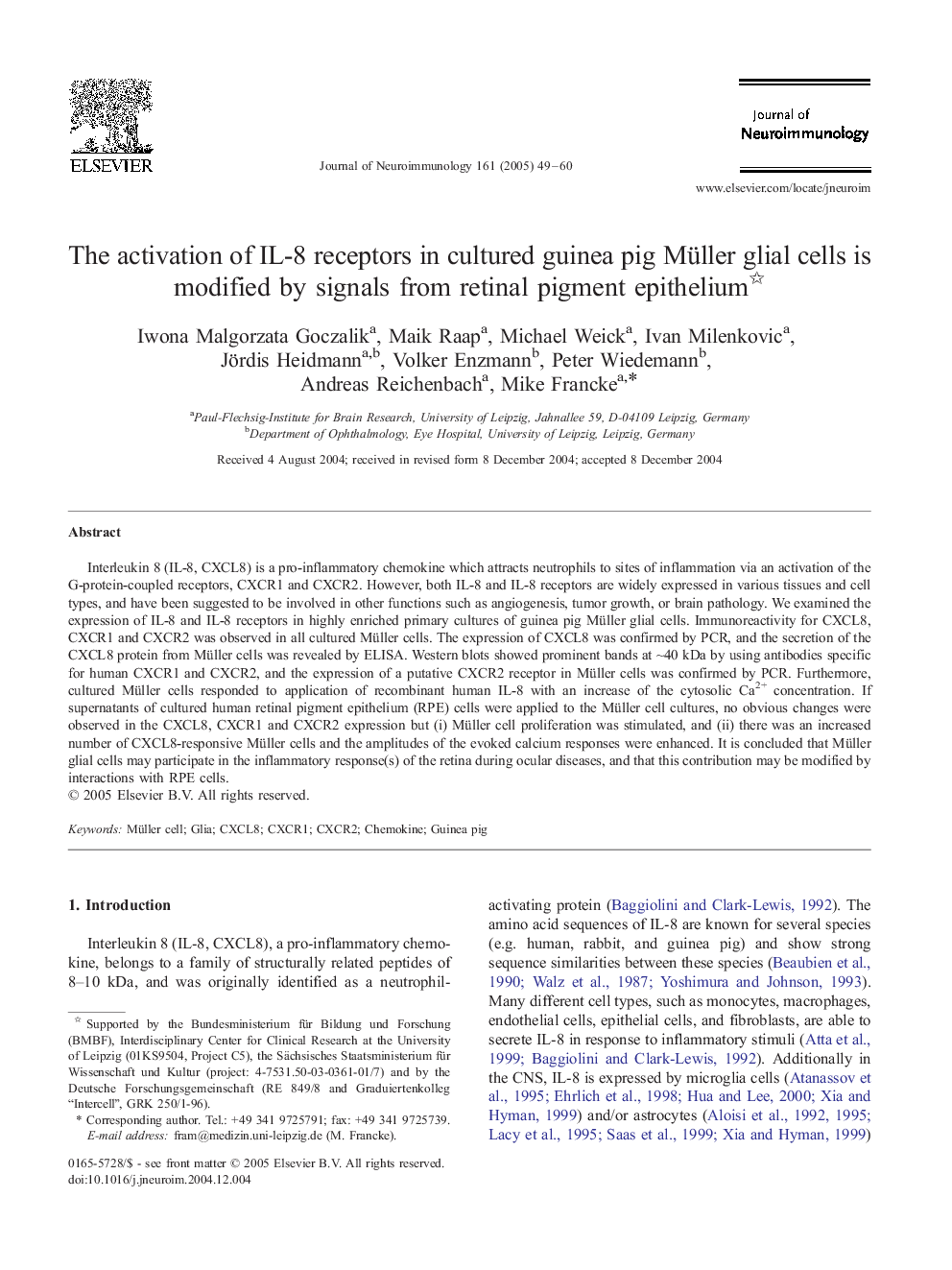| Article ID | Journal | Published Year | Pages | File Type |
|---|---|---|---|---|
| 9194536 | Journal of Neuroimmunology | 2005 | 12 Pages |
Abstract
Interleukin 8 (IL-8, CXCL8) is a pro-inflammatory chemokine which attracts neutrophils to sites of inflammation via an activation of the G-protein-coupled receptors, CXCR1 and CXCR2. However, both IL-8 and IL-8 receptors are widely expressed in various tissues and cell types, and have been suggested to be involved in other functions such as angiogenesis, tumor growth, or brain pathology. We examined the expression of IL-8 and IL-8 receptors in highly enriched primary cultures of guinea pig Müller glial cells. Immunoreactivity for CXCL8, CXCR1 and CXCR2 was observed in all cultured Müller cells. The expression of CXCL8 was confirmed by PCR, and the secretion of the CXCL8 protein from Müller cells was revealed by ELISA. Western blots showed prominent bands at â¼40 kDa by using antibodies specific for human CXCR1 and CXCR2, and the expression of a putative CXCR2 receptor in Müller cells was confirmed by PCR. Furthermore, cultured Müller cells responded to application of recombinant human IL-8 with an increase of the cytosolic Ca2+ concentration. If supernatants of cultured human retinal pigment epithelium (RPE) cells were applied to the Müller cell cultures, no obvious changes were observed in the CXCL8, CXCR1 and CXCR2 expression but (i) Müller cell proliferation was stimulated, and (ii) there was an increased number of CXCL8-responsive Müller cells and the amplitudes of the evoked calcium responses were enhanced. It is concluded that Müller glial cells may participate in the inflammatory response(s) of the retina during ocular diseases, and that this contribution may be modified by interactions with RPE cells.
Related Topics
Life Sciences
Immunology and Microbiology
Immunology
Authors
Iwona Malgorzata Goczalik, Maik Raap, Michael Weick, Ivan Milenkovic, Jördis Heidmann, Volker Enzmann, Peter Wiedemann, Andreas Reichenbach, Mike Francke,
